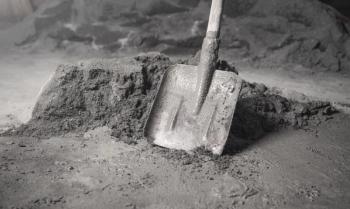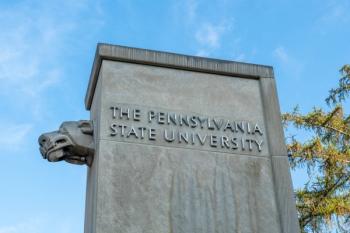
EAS 2025: Karl Booksh Wins EAS Award for Outstanding Achievements in Chemometrics
Key Takeaways
- Karl Booksh received the 2025 EAS Award for Outstanding Achievements in Chemometrics at the Eastern Analytical Symposium.
- EAS is a key annual event in analytical chemistry, offering presentations, exhibits, and professional development.
Karl Booksh, a Professor of Chemistry at the University of Delaware, has won the 2025 EAS Award for Outstanding Achievements in Chemometrics.
At the Eastern Analytical Symposium (EAS) conference, Karl Booksh was named and recognized as the 2025 EAS Award for Outstanding Achievements in Chemometrics recipient (1). Booksh, a Professor of Chemistry at the University of Delaware, was recognized at EAS for his achievement on November 18th at the EAS Award Session, which took place from 1:30–4:00 pm.
What is the EAS Conference?
EAS is an annual meeting and exposition dedicated to the broad field of analytical chemistry and its allied sciences. Over the course of three days, EAS features hundreds of presentations from several key researchers and industry experts in separation science, chromatography, spectroscopy, and other application areas (2).
Apart from presentations, industry vendors and suppliers also feature their latest products in the exhibit hall at EAS. There are also opportunities for attendees to learn through short courses and professional development workshops (2).
One of the highlights of EAS is the Award Session, where numerous researchers are recognized for their accomplishments and contributions to both chromatography and spectroscopy. Booksh was recognized at this session, along with the winners of the EAS Award for Outstanding Achievements in the Fields of Analytical Chemistry, the EAS Award for Outstanding Achievements in Separation Science, the EAS Award for Outstanding Achievements in Magnetic Resonance, the EAS Award for Outstanding Achievements in Mass Spectrometry, and the EAS Young Investigator Award (1).
What is Booksh’s research focus?
Booksh has had an extensive career in spectroscopy and chemometrics. He started his career at the University of Alaska Fairbanks, where he earned his BS in Chemistry. He later received his PhD in Analytical Chemistry at the University of Washington. After receiving his PhD, he served as a National Science Foundation (NSF) Postdoctoral Fellow at the University of South Carolina, in Columbia, South Carolina. Since 2007, Booksh has served as a professor at the University of Delaware, where he currently teaches and conducts research at.
Booksh’s research focus involves using chemometrics and machine learning (ML) in various application areas. In particular, much of his research concentrates on handheld and portable spectroscopic sensors for process, environmental, and cultural heritage applications (1). Because of this focus, Booksh has expertise in several key spectroscopic techniques, including fluorescence spectroscopy, Raman imaging, laser-induced breakdown spectroscopy (LIBS), and surface plasmon resonance (SPR) (1). Booksh has published his research in more than 150 papers.
Apart from his research, Booksh is also a contributing member to various professional societies related to his field of study. In previous roles, he has served as President of the Society for Applied Spectroscopy (SAS) and was named a Fellow of both SAS and the American Chemical Society (ACS). Currently, he is serving as an Associate Editor of Applied Spectroscopy Practica and as a member of the SAS Governing Board (1).
What work is being conducted in Booksh’s laboratory at the University of Delaware?
Currently, Booksh’s research group is developing in-situ chemical sensors for environmental, biomedical, and industrial monitoring. The work that his laboratory does integrates fiber-optic SPR, Raman, and fluorescence sensing with advanced chemometric analysis to improve sensitivity, selectivity, and robustness (3,4). A key focus is pairing instrumental design with statistical modeling to overcome the limitations of traditional physical approaches (3,4). Current targets include SPR sensors for protein and small-molecule detection in medical, defense, and air-quality contexts, as well as Raman and fluorescence sensors for environmental process monitoring and future deep-sea vent analysis (3,4).
We sat down with Booksh to talk about his research at the SciX Conference that took place in early October in Covington, Kentucky. You can watch our interview with Booksh by clicking on the below links.
To see the rest of our coverage of EAS, click
References
- Eastern Analytical Symposium, 2025 EAS Award for Outstanding Achievements in Chemometrics. EAS.org. Available at:
https://eas.org/eas-award-outstanding-achievements-vib-spec/ (accessed 2025-11-18). - American Chemical Society, Eastern Analytical Symposium. ACS.org. Available at:
https://acsanalytical.org/eastern-analytical-symposium/ (accessed 2025-11-18). - Wetzel, W. Classifying Exotic Hardwood Species with Stacked Machine Learning Models and LIBS. Spectroscopy. Available at:
https://www.spectroscopyonline.com/view/classifying-exotic-hardwood-species-with-stacked-machine-learning-models-and-libs (accessed 2025-11-18). - Wetzel, W. An Inside Look at Conformal Prediction. Spectroscopy. Available at:
https://www.spectroscopyonline.com/view/an-inside-look-at-conformal-prediction (accessed 2025-11-18).
Newsletter
Get essential updates on the latest spectroscopy technologies, regulatory standards, and best practices—subscribe today to Spectroscopy.





